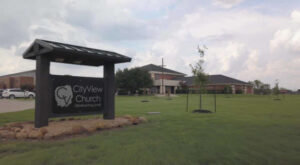While membership in the nation’s largest Christian communions declined last year, two Pentecostal denominations showed an increase.
The Assemblies of God (AG) of Springfield, Missouri, and the Cleveland, Tennessee-based Church of God were the only two denominations of traditional Christian orthodoxy among the 25 largest churches in the U.S. to report membership increases, according to the 2009 edition of the Yearbook of American & Canadian Churches, an annual chronicle of religious institutions edited by the National Council of Churches (NCC) and published by Abingdon.
The AG listed nearly 2.9 million members while the Church of God reported 1 million.
The ecumenical NCC reported the Church of Jesus Christ of Latter-day Saints and Jehovah’s Witnesses as the only other church groups to show membership increases, even though most Pentecostals, and many mainline churches and orthodox Christians, would consider those two groups separate religions.
A slight membership decline among Catholic and Southern Baptist churches, according to the yearbook, raised eyebrows because both denominations have typically grown over the years. “Now they join virtually every mainline church in reporting a membership decline,” stated an NCC release.
In the bigger picture, the yearbook reported the small less-than-one-percent drop in membership in each denomination was not “earth-shattering” because there are still more than 67 million Roman Catholics in the U.S. and 16 million Southern Baptists.
Churches listed in the NCC yearbook as experiencing the highest rate of membership loss are the United Church of Christ, the African Methodist Episcopal Zion Church, the Presbyterian Church (USA), the Lutheran Church – Missouri Synod, and the Evangelical Lutheran Church in America.
The Rev. Eileen W. Lindner, the yearbook’s editor, said there are no clear-cut theological or sociological reasons for church growth or decline. “Many churches are feeling the impact of the lifestyles of younger generations of church-goers,” Lindner said, “the Gen X’ers or Millenials in their 20s and 30s who attend and support local congregations but resist joining them.”
See an error in this article?
To contact us or to submit an article




















